Wanting in on the growing SUV market, Porsche introduced the Cayenne in 2002, and it’s since been a hit for the company. Eight years after the arrival of the first model, Porsche debuted the second-generation car and then in 2017, seven years on, the third-generation model arrived. So it’s nearing time for the next one and, indeed, Porsche has already announced that the fourth-generation model will arrive in 2026.
Notably though, that one will be all-electric and built on a dedicated EV platform. And therein also lies a problem; there will still be many markets with significant ICE vehicle demand, so how do you keep the Cayenne relevant in those regions? You undertake “one of the most extensive product upgrades in the history of Porsche”, says Michael Schaetzle, vice president of Product Line Cayenne. And thus we have the new Cayenne, which gets an overhaul to pretty much its entire self – exterior, interior, powertrains and suspension.
Porsche Cayenne facelift exterior design
As soon as you set eyes on the new car, you know it’s a Cayenne. Porsche is known for fastidiously holding on to a vehicle’s design ethos for generations and so it has also with the new Cayenne. Look again though, and you will see there’s a lot different at the front. The headlights are the first thing you will notice, the squared-off profile being quite unlike the curved profiles of its predecessors. This means there’s a new bonnet and Porsche designers have also squared off the outer edges of the large grille.
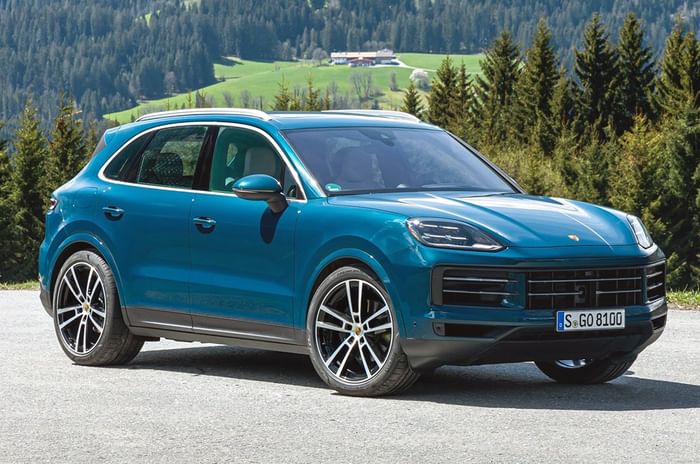 Unlike the curved profile of its predecessors, the headlights are now squared off.
Unlike the curved profile of its predecessors, the headlights are now squared off. Matrix LED lights are now standard where its 11 high beam segments can individually light up to prevent dazzling oncoming traffic. New to the facelift are the optional HD-Matrix LED headlights, which employ 16,384 individual micro-LED pixels to create an almost unlimited variety of light patterns to do a number of things like create a light carpet to mark the width of the Cayenne for a driver to easily navigate a narrow stretch, drawing a driver’s attention by flashing a brighter column of light to mark out pedestrians walking at the side of the road and, of course, constantly adjusting the beam to prevent dazzling oncoming traffic.
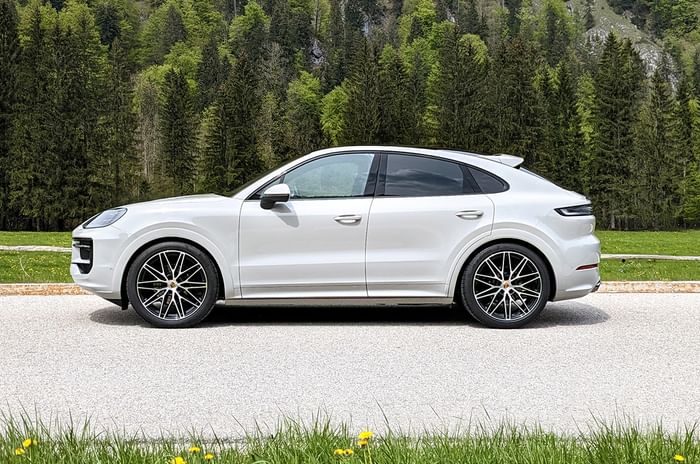 The Cayenne SUV is 20mm taller than its Coupe sibling.
The Cayenne SUV is 20mm taller than its Coupe sibling. With the update, both SUV and coupe body styles are on offer. At the sides, both are familiar with the doors being carried over, but there are new alloy patterns with rim sizes offered in 20, 21 and 22 inches. At the rear, the continuous LED light bar remains, but it’s now of uniform width, unlike the earlier car that had a narrower middle section. The light bar also has 3D surfacing treatment as does the Porsche lettering in the centre, and these look really cool when seen up close. There’s a new rear bumper, which now carries the number plate for both SUV and coupe body styles; previously, this was the case with the Coupe only. Dimensionally, on account of the styling update, the new car is a bit different from the outgoing model, but the wheelbase at 2,895mm remains the same as before.
Porsche Cayenne facelift interior, space, features
When Porsche released information about the production car, it chose to show off the dashboard first and it’s understandable why. It’s a big update over the earlier car and the first things you’ll notice are the three screens. The instrument panel is now fully digital, curved and free-standing – similar to the Taycan – and the 12.6-inch unit has configurable displays, including the traditional Porsche 5-dial layout. The 12.3-inch centre touchscreen from before with all the expected connectivity functions carries over, while the big addition is the optional 10.9-inch display on the passenger side. This outputs driving and infotainment data and can also stream videos, but to make sure the driver isn’t distracted, the display has a coating that prevents the driver from seeing the contents and simply looks like a shiny black surface.
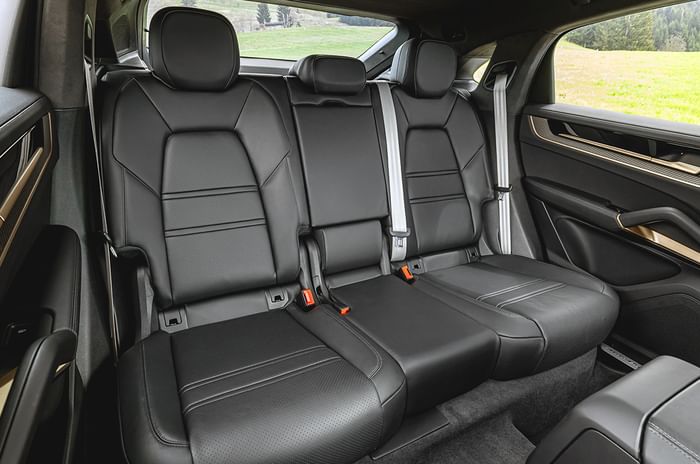
Also keeping the driver focused on the road is what the company calls the Porsche Driver Experience, which first arrived on the Taycan. It brings frequently used functions closer to the driver; for instance, the left lever behind the wheel now has additional driver assistance functions and the gear selector is now on the dashboard, which frees up additional storage space on the centre console. I didn’t like this though, as it’s hidden from sight behind the wheel rim and doesn’t have that emotional or traditional feel of a selector placed in the centre console.
As for other features, you get four-zone climate control, 8-way electric front seats, six airbags, park assist with a rear camera and an air purification system that automatically switches to recirculation inside tunnels. There’s more too, like heated and cooled seats at the front and back, but they all sit on the options list.
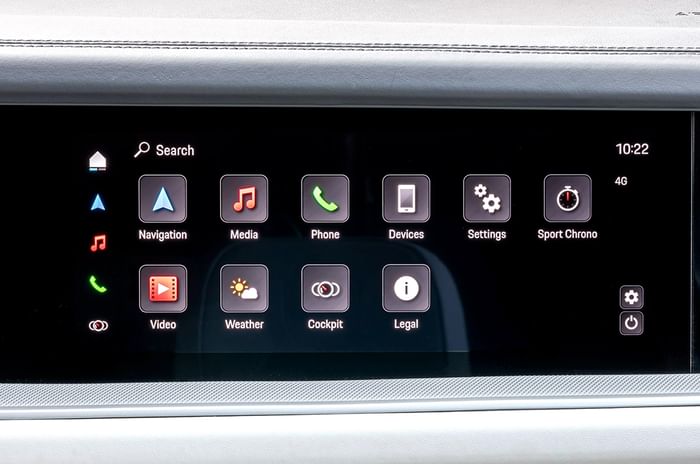
In terms of space, the Cayenne does not offer as much as some of its larger rivals, but there’s enough head- and legroom. And while you can seat five, it’s best used as a four-seater as the outer rear seats are prominently contoured leaving a narrower central seat and also a large tunnel to contend with. Boot space remains generous at 772 litres for the SUV, while the Coupe’s is lower at 592 litres.
Porsche Cayenne facelift engine, gearbox, performance
The powertrain line-up gets a boost with the updated Cayenne. The base model gets power from the 3.0-litre, V6 petrol, which now makes 353hp and 500Nm of torque, that’s up 13hp and 50Nm from before. The plug-in E-Hybrid is also powered by the V6 and it puts out a combined 470hp, which is an 8hp increase, though torque at 650Nm is lower than the earlier car’s 700Nm. Battery size goes up though from 17.9kWh to 25.9kWh, giving the hybrid Cayenne an increased equivalent all-electric range (EAER city) of 90km. Instead of a V6, the Cayenne S now gets the massive 4.0-litre V8, which has increased its power significantly – it makes 474hp, which is 34hp more, and 600Nm of torque, up 50Nm. The V8 will also power the wild Cayenne Turbo GT that puts out 659hp, 19hp more than before, and that propels it to a top speed of 305kph and it does the dash to 100kph in 3.3 seconds. Sadly though, this isn’t likely to make it to markets like India, Europe and Japan given that it cannot meet the tighter emissions regulations.
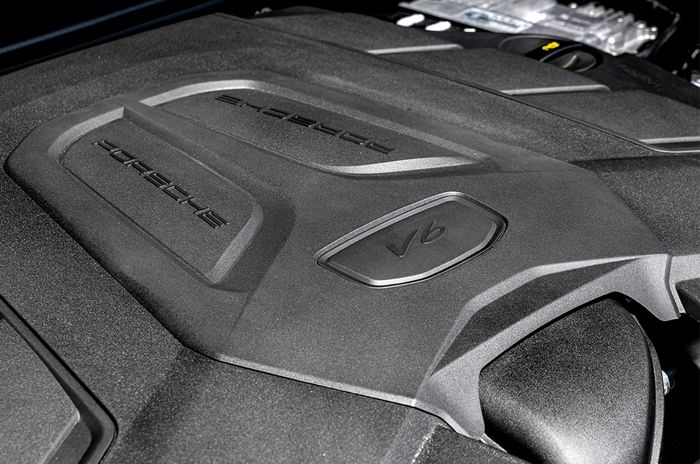
As before, the V6 is quick and it can easily hold high triple-digit autobahn speeds as I happily tried out on the unrestricted stretches of the German highways, but it does lack that sense of urgency with a turbo lag-like pause when you ask it to get a move on. Top speed is 248kph with a zero to 100kph claimed time of 5.7 seconds.
If faster is what you’re looking for, the E-Hybrid offers more with a 254kph top speed and a time of 4.9 seconds for the dash to 100kph. What’s nice though is that throttle response is quick with the 176hp electric motor filling in nicely while the turbo spools up. Electric-only motoring is also possible and I was able to keep up with traffic on some open roads cruising quite comfortably at around 80kph. Staying in pure electric mode is also quite easy as the engine is in no hurry to kick in, even after a fair amount of accelerator input. The battery does charge while on the move, but the E-Hybrid is also a plug-in and Porsche says a new 11kW on-board charger now shortens the charging time to just under two and a half hours despite the larger battery.
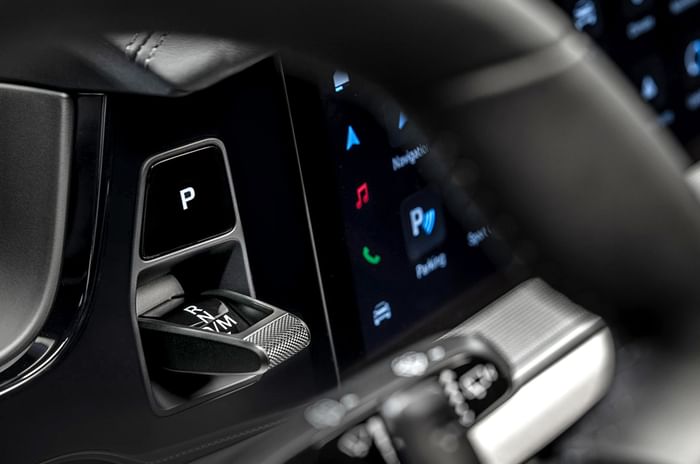
Expectedly, Cayenne S with its V8 is the most fun with a 0-100kph time of 4.7 seconds and a top speed of 272kph. What makes it entertaining is the quick and sharp throttle response, which in Sport Plus is really very crisp. Equally enjoyable is the change of character in Normal mode, switched over to this mode, it’s easygoing and calm and in traffic – yes, we did see some – it’s easy to drive with a laid-back style. Porsche says they have increased the differentiation between modes and it’s quite apparent.
Porsche Cayenne facelift ride and handling
More apparent though is the change in ride and handling. The Cayenne was always a sharp-handling SUV known for its driver involvement and with the update, Porsche has managed to make it sharper still. There are two suspension set-ups on offer, steel and air springs, and the latter – the adaptive air suspension with the Porsche Active Suspension Management (PASM) – is what is standard in India.
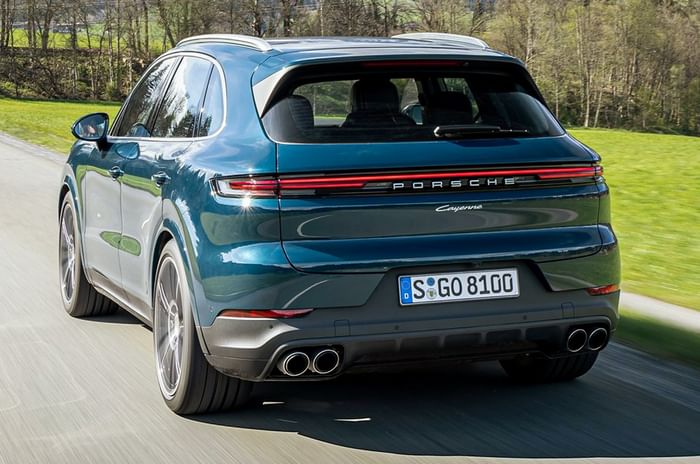
Coming to the air springs first: body control, which was already good, has been tightened still and going around some nice well-laid-out corners in the Alps, this was very apparent. Cornering is quick and level and the road grip phenomenal; it’s easily the highlight of the Cayenne. The steering too is excellent – a Porsche hallmark – and its weight feels just right. As for ride quality, it was hard to judge this on the smooth German and Austrian roads, but we did drive the steel-sprung version over some rough terrain.
Our drive also included a run up to a ski lodge via a mountain pass that was basically a rutted path and the ride was surprisingly good, making me wonder why the steel springs are not on offer in India. They certainly seemed very capable of handling the rough and tumble and here too handling was top notch.
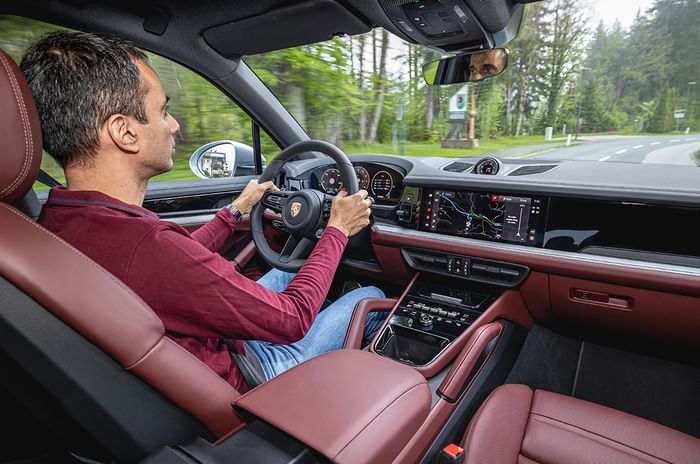 Steering feel is excellent – a Porsche hallmark – and its weight feels just right.
Steering feel is excellent – a Porsche hallmark – and its weight feels just right. Porsche Cayenne facelift price and verdict
Porsche has announced prices for the base V6 Cayenne with bookings open and deliveries set for July this year. The SUV body style costs Rs 1.36 crore, while the coupe comes in at 1.42 crore, which means it’s more expensive than the likes of the BMW X5 and the Audi Q8. What pinches though is the fact that most of the features sit on the options list, stuff like the passenger screen and even cooled seats are all extra. So if you want a well-loaded car, prepare to lighten your wallet.

The Cayenne still comes across as a tempting proposition. For starters, that famed Porsche crest has its own charm and the update to the suspension is an indication of just how serious Porsche is about the facelift. While most facelifts bring in new styling and features, the Cayenne adds more power, a revised variant-powertrain hierarchy and, of course, suspension tweaks too. And after two days with it, the changes are apparent and pleasing. To my eyes, the Cayenne, especially the SUV, looks really smart, the drivability is superb and that brilliant ride and handling has somehow gotten even better still. Over time, I’ve driven many updates of the Cayenne and each time, I come away confident that there’s enough for it to remain Porsche’s bestseller. Now though, this generation has to soldier on longer than any of its previous generations, so am I still confident there’s enough brought to the table? I most certainly am.














































